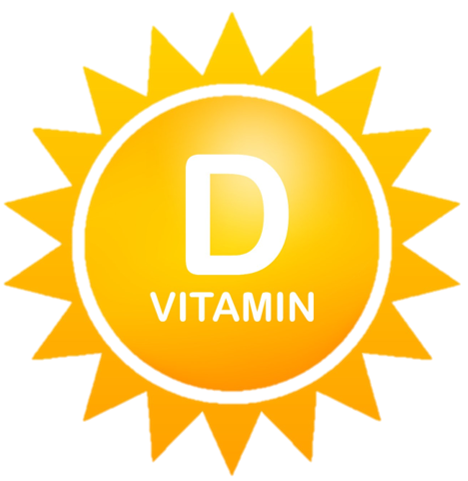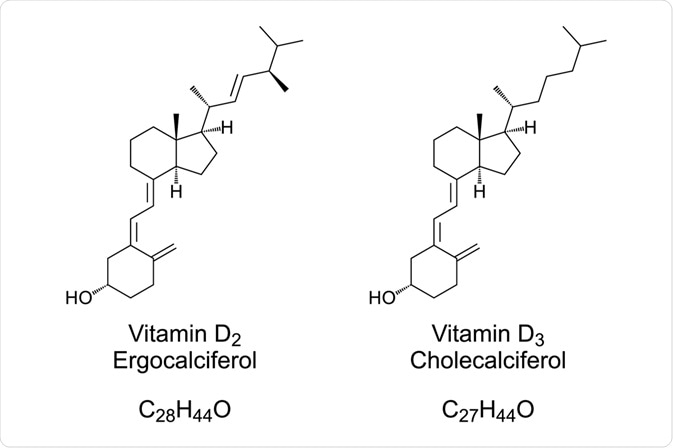Vitamin D has become one of the most talked-about nutrients around the world. And for good reason.

Deficiency in Vitamin D is shockingly common — even in countries with sunshine all year round. You’d think sunlight would solve it, but our modern lifestyles (indoor work, sunscreen, pollution) have made deficiency more widespread than ever.
Most turn to supplements or fortified foods — but here’s where it gets interesting.
First of all, which Vitamin D are we actually talking about?

There are two forms of Vitamin D.
-
D2 (ergocalciferol) – mostly plant or synthetic-based, less bioavailable. It’s far less effective in raising and maintaining blood levels of Vitamin D.
-
D3 (cholecalciferol) – the one our skin naturally and actively produces from sunlight, and the one that truly matters. Which benefits our bone health, immune support, and our body overall.
But how much D3 do we really need?
Most health authorities recommend maintaining blood levels of Vitamin D3 within the range of 50 to 125 nmol/L. But here’s the catch — there is no fixed “one-size-fits-all” requirement.
Your actual need for Vitamin D3 can vary depending on your genes, skin tone, age, body fat percentage, geographic location, lifestyle, and even gut health. Some people may absorb and utilize D3 very efficiently. Others may need far more to reach optimal levels.
Fortunately, nature often bundles them together — and the right whole-food sources naturally provide both.
But D3 rarely works alone.
Introducing the Supporting Cast
To function optimally — especially in supporting bone and cardiovascular health — Vitamin D3 often needs a partner: Vitamin K2.
K2 plays a vital role in guiding calcium to where it belongs (your bones and teeth), and away from where it doesn't (like your arteries). Without enough K2, D3 supplementation may not give you the full benefit — or worse, may contribute to calcification in the wrong places.
But K2 isn’t the only ally
Nutrients like Magnesium, Zinc, and B Vitamins (especially B2, B6, B12, and Folate) also play key roles in activating D3, regulating hormones, supporting energy metabolism, and maintaining healthy inflammation levels.
Fortunately, nature often bundles them together — and the right whole-food sources naturally provide both.
But here’s where things get a bit tricky
Many supplements on the market today use synthetic D3, which is often derived from lanolin (a waxy substance from sheep’s wool) or sometimes even less natural sources. While synthesized D3 can help, some people report issues with absorption — or simply prefer to avoid synthetic compounds altogether.

And while food-based D3 exists, it’s usually present in very small amounts — unless you're eating wild-caught fish or cod liver oil daily.
So what’s the solution?
This is where whole-food, bio-organic nutrition starts to make more sense.
Nature doesn’t give us vitamins in isolation. It gives us nutrients in a balanced matrix — surrounded by co-factors, trace elements, and enzymes that make absorption and synergy possible.
Some advanced natural supplements now contain real, food-based sources of D3 — not just micro-doses, but enough to contribute meaningfully to your daily intake.
For example, we work with one such nutrient-dense food that naturally provides up to 1944 IU of Vitamin D3 per 100g — plus dozens of other essential nutrients in their original, unprocessed form.
And no, it’s not fish oil. And it's not fortified cereal.
It is algae.
The Super Algae
One remarkable natural source of bioavailable nutrients — including Vitamin D3 — is Chlorella Sorokiniana, a species of microalgae known for its robust growth and exceptional nutritional density.

Unlike other chlorella species, C. Sorokiniana is naturally sun-tolerant and heat-resistant, thriving even in high-light and high-temperature environments. This resilience allows it to undergo intensive photosynthesis, leading to a richer concentration of vital compounds like chlorophyll, carotenoids, and fat-soluble vitamins such as D3. Because it can absorb more sunlight without breaking down, C. Sorokiniana can naturally produce higher levels of light-dependent nutrients.
Its fast growth and efficient nutrient conversion make it a favorite in research and large-scale cultivation focused on metabolic health, immunity, and detoxification.
But we go a step further.
Among the many strains studied, our unique W87-10 strain of Chlorella Sorokiniana has been specially cultivated under decades of research to deliver a consistent, highly bioavailable profile of key nutrients. Not just Vitamin D3 — but also magnesium, trace minerals, complete protein, chlorophyll, and phycocyanin — all in a naturally synergistic, whole-food form.

View the full nutrition's list
In fact, clinical studies on related strains have shown that some C. Sorokiniana can provide up to 1944 IU of natural Vitamin D3 per 100g — and with W87-10, you get the added assurance of batch-to-batch nutrient consistency, unlike many variable whole-food sources.
This makes it not just a green superfood — but a scientifically advanced one.
Scientific Citations
Lips P, de Jongh RT, van Schoor NM. Trends in Vitamin D Status Around the World. JBMR Plus. 2021;5(12):e10585. Published 2021 Nov 30. doi:10.1002/jbm4.10585
Nuti R, Gennari L, Cavati G, Caffarelli C, Frediani B, Gonnelli S, Catalano A, Francucci CM, Laurentaci C, Letizia Mauro G, et al. Analysis of Usual Consumption of Vitamin D Among Adult Individuals in Italy. Nutrients. 2024; 16(23):4194. https://doi.org/10.3390/nu16234194
Nimitphong H, Holick MF. Vitamin D status and sun exposure in southeast Asia. Dermatoendocrinol. 2013;5(1):34-37. doi:10.4161/derm.24054
Vin Tangpricha, Natasha B Khazai, Francisco Talavera, Vitamin D Deficiency and Related Disorders. Emedicine. Endocrinology. Sep 19, 2024. https://emedicine.medscape.com/article/128762-overview
Weishaar T, Rajan S, Keller B. Probability of Vitamin D Deficiency by Body Weight and Race/Ethnicity. J Am Board Fam Med. 2016 Mar-Apr. 29 (2):226-32.
Palikrousis TL, Manolis C, Kalamaras SD, Samaras P. Effect of Light Intensity on the Growth and Nutrient Uptake of the Microalga Chlorella sorokiniana Cultivated in Biogas Plant Digestate. Water. 2024; 16(19):2782. https://doi.org/10.3390/w16192782
Vitamin D Deficiency and Its Predictors in a Country with Thirteen Months of Sunshine: The Case of School Children in Central Ethiopia Tolassa Wakayo ,Tefera Belachew,Hassan Vatanparast, Susan J. Whiting. March 30, 2015, https://doi.org/10.1371/journal.pone.0120963
van Ballegooijen AJ, Pilz S, Tomaschitz A, Grübler MR, Verheyen N. The Synergistic Interplay between Vitamins D and K for Bone and Cardiovascular Health: A Narrative Review. Int J Endocrinol. 2017;2017:7454376. doi:10.1155/2017/7454376
Vitamin D status in the tropics: Is sunlight exposure the main determinant?
M. M. Mendes, K. H. Hart, P. B. Botelho, S. A. Lanham-New 11 October 2018 https://doi.org/10.1111/nbu.12349
Additional Reading (Public Sources)
indiatimes.com - Vitamin D: How much should be consumed daily to stay healthy
clevelandclinic.org - Vitamin D Deficiency
eatingwell.com - What happens to your body when you take Vitamin K2 regularly?
verywellhealth.com - Understanding Vitamin K2 and Its Health Benefits
hopkinsdiabetesinfo.org - The Sunshine Vitamin Deficiency





